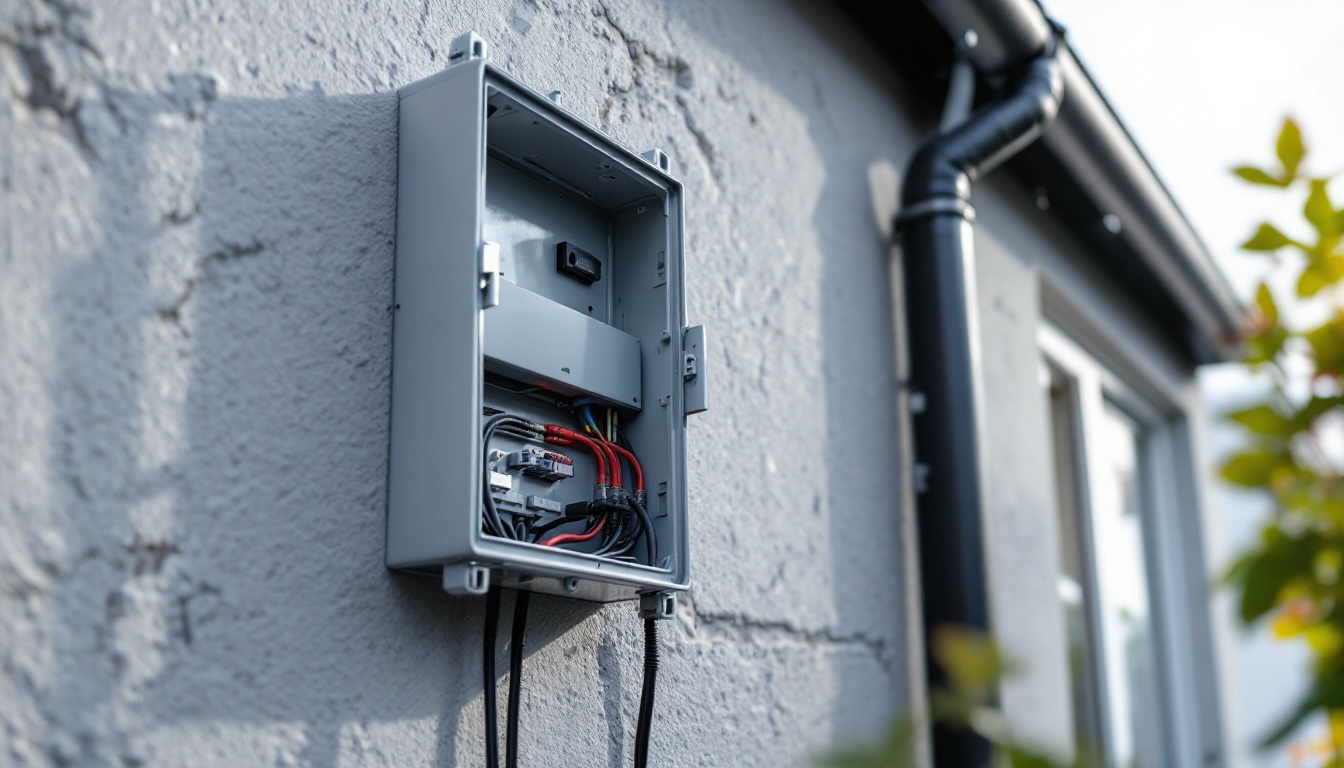
Lighting contractors play a crucial role in enhancing outdoor spaces, and one of the most effective ways to do this is through the installation of solar light walkways. These innovative lighting solutions not only provide safety and visibility but also add aesthetic appeal to residential and commercial properties. In this article, we will explore the essential tools that lighting contractors need to effectively install solar light walkways, ensuring that their projects are both efficient and successful.
Solar light walkways are designed to illuminate pathways, gardens, and outdoor areas using solar-powered lights. These lights harness sunlight during the day, converting it into energy to power the fixtures at night. This eco-friendly solution is increasingly popular among homeowners and businesses looking to enhance their outdoor environments while reducing energy costs.
The benefits of solar light walkways extend beyond mere illumination. They contribute to safety by marking pathways, reducing the risk of accidents in poorly lit areas. Additionally, they can enhance the overall aesthetics of a property, creating a welcoming atmosphere for guests and visitors. For lighting contractors, understanding the various types of solar lights available and their specific applications is essential for successful installations. Moreover, the installation of solar lights can significantly decrease a property’s carbon footprint, making it a sustainable choice that aligns with growing environmental awareness.
Furthermore, solar light walkways can be an excellent way to promote biodiversity in gardens and outdoor spaces. By incorporating solar lights, homeowners can create a serene ambiance that attracts nocturnal wildlife, such as fireflies and other beneficial insects, which can enhance the ecological balance of the area. This not only beautifies the space but also fosters a connection with nature, encouraging outdoor activities and gatherings under the stars.
When it comes to solar light walkways, there are several types of fixtures to consider. Each type serves a unique purpose and can be selected based on the specific needs of a project.
In addition to these common types, there are also solar lanterns and string lights that can be used to create a whimsical atmosphere in outdoor settings. Solar lanterns can be hung from trees or placed on tables, providing a charming glow for evening gatherings. String lights, on the other hand, can be draped across patios or along fences, adding a festive touch to any occasion. These versatile lighting options allow for creativity in design, enabling homeowners to personalize their outdoor spaces while enjoying the benefits of solar technology.
Installing solar light walkways requires a specific set of tools to ensure that the job is done correctly and efficiently. Lighting contractors should be well-equipped with the following tools to facilitate the installation process.
One of the first steps in installing solar light walkways is preparing the ground. Depending on the type of solar lights being installed, digging tools such as shovels, post hole diggers, or augers may be necessary. These tools help create the appropriate holes for fixtures, ensuring that they are securely anchored and positioned correctly.
When selecting digging tools, it’s important to consider the soil type and the depth required for the installation. For instance, rocky or clay soils may require more robust tools to penetrate effectively. Having the right digging tools on hand can streamline the installation process and minimize delays.
Accurate measurements are critical in any installation project. Lighting contractors should have measuring tapes, levels, and marking tools readily available. These tools ensure that solar lights are evenly spaced and aligned, creating a professional appearance.
Using a measuring tape allows contractors to determine the distance between each light fixture, while a level ensures that they are installed at the correct height. Additionally, marking tools such as chalk or stakes can help outline the intended path for the lights, making the installation process more straightforward.
While solar lights are generally easy to install, some may require basic electrical tools for wiring or adjustments. Having a set of wire strippers, connectors, and a multimeter can be beneficial, especially for contractors who work with more complex solar lighting systems.
Understanding the electrical components of solar lights is essential for troubleshooting any issues that may arise during installation. Familiarity with these tools can help contractors ensure that the solar lights function optimally and meet the client’s expectations.
Once the necessary tools are gathered, the installation process can begin. Following a systematic approach will help ensure that the solar light walkway is installed efficiently and effectively.
Before any digging or installation begins, it’s crucial to plan the layout of the solar light walkway. This involves determining the best locations for the lights based on the pathway’s design and the surrounding landscape. Contractors should consider factors such as sunlight exposure, potential obstructions, and the desired aesthetic effect.
Creating a visual plan can help contractors visualize the final outcome and make any necessary adjustments before starting the installation. This step is vital for ensuring that the solar lights will provide adequate illumination and enhance the overall look of the outdoor space.
Once the layout is planned, the next step is to prepare the ground for installation. This may involve clearing debris, leveling the soil, and digging holes for the solar lights. It’s essential to ensure that the ground is stable and free from obstacles that could hinder the installation process.
Contractors should also take care to avoid damaging any existing landscaping or underground utilities during this phase. Proper preparation will facilitate a smoother installation and help avoid potential issues down the line.
With the ground prepared, contractors can begin installing the solar lights. This typically involves placing the fixtures into the pre-dug holes and securing them according to the manufacturer’s instructions. It’s important to ensure that the lights are positioned correctly to maximize their exposure to sunlight during the day.
After installation, contractors should test each light to confirm that they are functioning properly. This step is crucial for ensuring that the solar light walkway meets the client’s expectations and provides the desired level of illumination.
To ensure the longevity and effectiveness of solar light walkways, regular maintenance is essential. Lighting contractors can provide valuable guidance to clients on how to care for their solar lights, helping to extend their lifespan and maintain their performance.
Solar lights can accumulate dirt, dust, and debris over time, which can hinder their performance. Regular cleaning of the solar panels and fixtures is essential to ensure optimal functionality. Contractors should recommend using a soft cloth and mild soap to clean the surfaces without scratching or damaging them.
Encouraging clients to inspect their solar lights periodically can help identify any issues early on, allowing for timely repairs or replacements. A well-maintained solar light walkway will continue to enhance the outdoor space for years to come.
Most solar lights are equipped with rechargeable batteries that may need to be replaced periodically. Over time, these batteries can lose their ability to hold a charge, resulting in diminished performance. Contractors should inform clients about the signs of battery failure, such as lights that fail to illuminate at night.
Providing guidance on how to replace the batteries or offering this service as part of a maintenance package can enhance client satisfaction and ensure that the solar lights continue to function effectively.
Seasonal changes can affect the performance of solar lights, particularly in regions with harsh winters or heavy snowfall. Contractors should advise clients on how to adjust their solar lights during different seasons to ensure optimal performance. For example, relocating lights to ensure they receive adequate sunlight during the winter months can help maintain their functionality.
Additionally, contractors can recommend storing solar lights indoors during extreme weather conditions to prevent damage. By providing these seasonal maintenance tips, contractors can help clients maximize the benefits of their solar light walkways.
Solar light walkways offer an effective and eco-friendly solution for enhancing outdoor spaces. For lighting contractors, understanding the essential tools and installation processes is key to delivering high-quality results. By equipping themselves with the right tools, following a systematic installation approach, and providing ongoing maintenance support, contractors can ensure that their solar light walkways meet client expectations and stand the test of time.
As the demand for sustainable lighting solutions continues to grow, lighting contractors who specialize in solar light walkways will find themselves well-positioned to meet the needs of their clients. By staying informed about the latest trends and technologies in solar lighting, contractors can further enhance their expertise and offer valuable services that contribute to the safety and beauty of outdoor spaces.
Ready to elevate your lighting projects with the best in solar walkway solutions? At LumenWholesale, we provide lighting contractors with the highest quality, spec-grade lighting products at unbeatable wholesale prices. Say goodbye to local distributor markups and hello to superior lighting that meets the highest industry standards. With our hassle-free bulk buying and free shipping, you can trust that you’re getting premium lighting at the best value — all without hidden fees or compromises. Enhance the safety and beauty of your outdoor spaces with the perfect blend of quality, affordability, and convenience. Visit LumenWholesale today and experience the difference in your next lighting project.

Discover the top strategies lighting contractors use to maximize efficiency and aesthetics with LED overhead lights.

Discover the essential techniques and strategies for lighting contractors to optimize LED lights and fixtures.

Discover the essential facts about 8-foot LED light fixtures that every lighting contractor needs to know.

Discover how an exterior junction box can revolutionize your lighting installation projects.